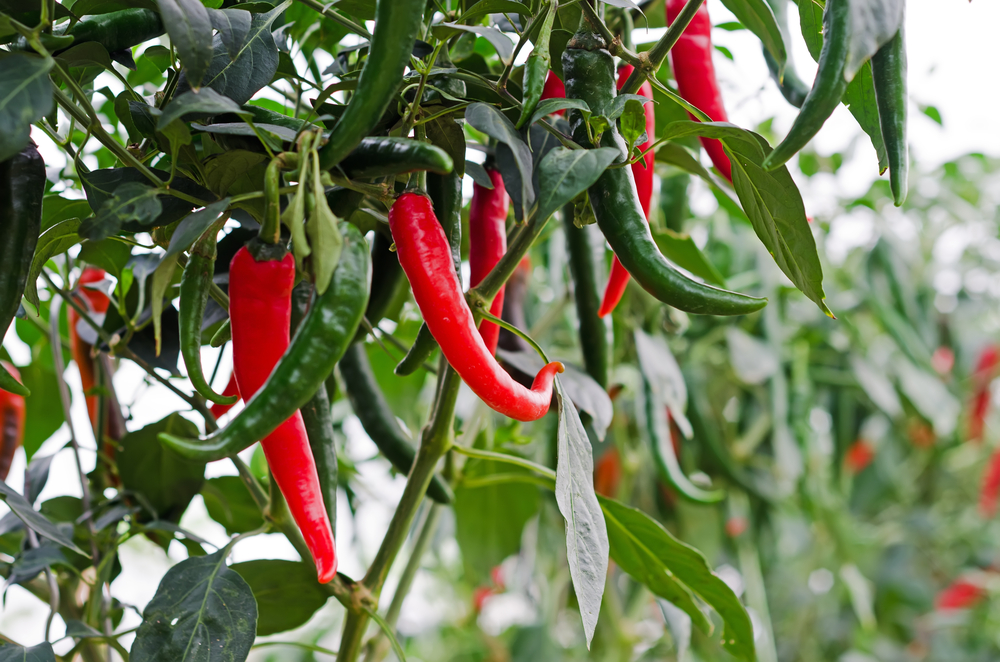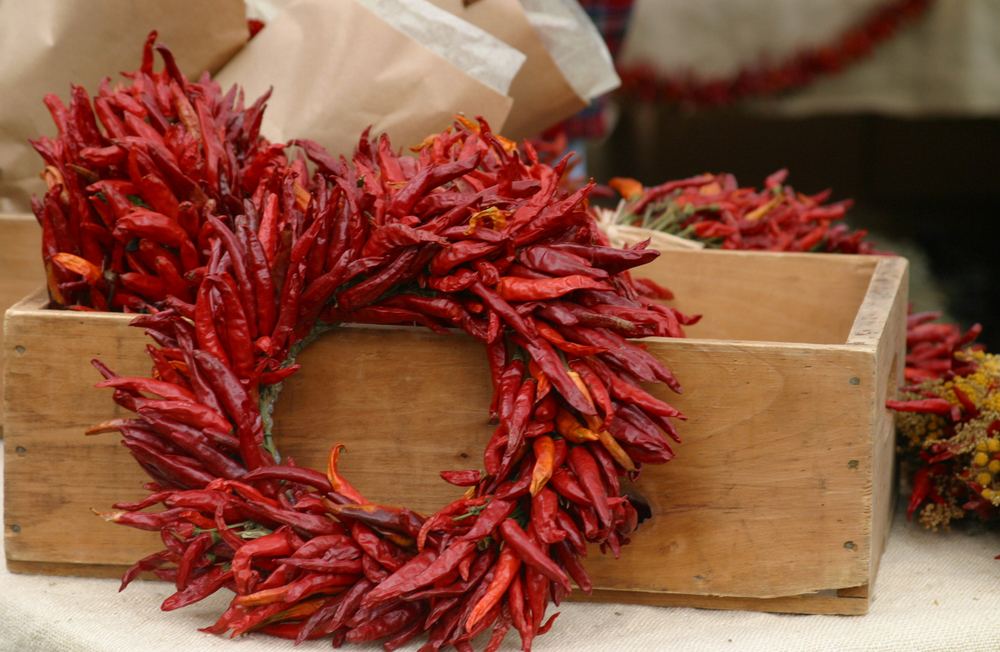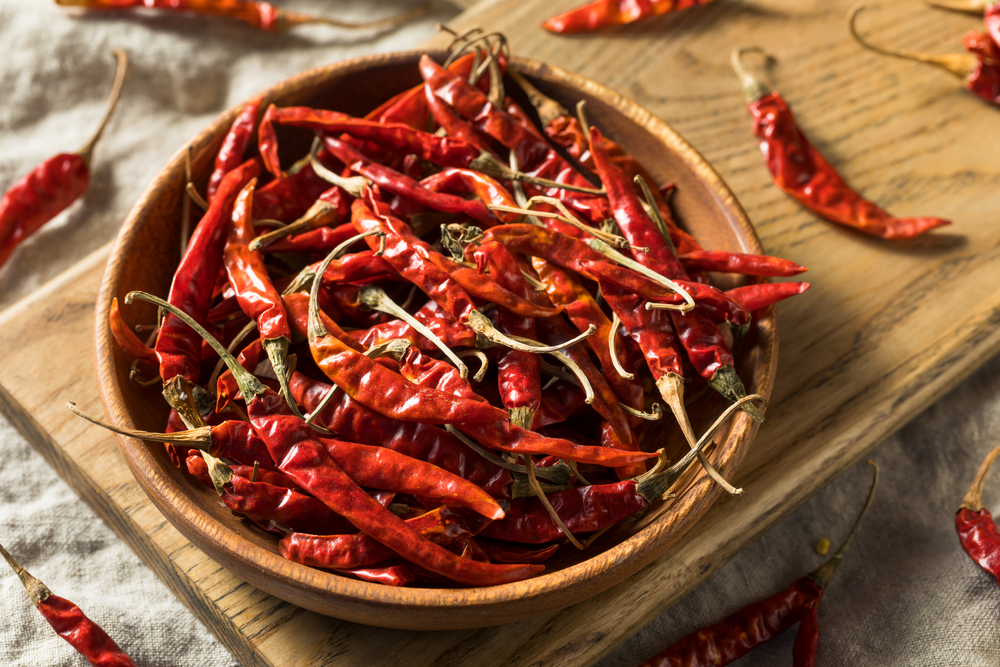Scientifically known as capsicum annum, Chile de Arbol is a variety of hot Mexican pepper with a 15,000-30,000 SHU. It originated from Jalisco and Oaxaca states of Mexico and remains a favorite to date. While Chile de Arbol is classified as a hot pepper, it gives cuisines a mild smoky, nutty, earthy flavor.
What Is A Chile De Arbol?
The name Chile de Arbol means “tree chili” in English. It is thin and often 2-3in long with a diameter of .25in. The pods start a deep green color, which shifts to bright red as they ripen.
While Chile de Arbol is classified as hot pepper, it gives cuisines a mild smoky, nutty, earthy flavor. However, it may produce a burning sensation when consumed due to the high amounts of capsaicin in its ribs and pods.

Other Names For Chile De Arbol
Chile de Arbol has other names such as bird’s beak Chile, translating to ‘pico de pajaro’ in Spanish, and rat’s tail Chile, ‘cola de rata.’
Its long skinny size resembles a rat’s tail, while the gentle curvy stems mimic a bird’s beak.
How Hot Are Chile De Arbols?
With a heat index of 15,000-30,000 Scoville heat units on the Scoville scale, Chile de arbols are great for adding heat and flavor to any meal.
They are less spicy than Cayenne pepper (30,000-50,000 SHU) and are six times hotter than Jalapeno Chile, which has 2,500-8,000 SHU and lends some acidic heat to dishes since it’s used green.
Tree chilis share a similar SHU with Chile Japones at 15,000-30,000 SHU, yet the two peppers have different flavor profiles.
Serrano pepper is milder in spice than Chile de Arbol, while Habanero Chile has an index of 150,000-575,000 SHU, which makes them 5-20 times hotter than Chile de arbol.
Why Is Chile De Arbol Called The Tree Chili?
Tree chili is pronounced Chile de Arbol in Spanish.
The pepper derives its name from its strong, thick stick-like, woody stems giving it a shape like a miniature tree.
The pepper plant grows like a tree up to four feet high.
Chile De Arbol In Cooking
Arbol chiles have a medium heat with a unique smoky, grassy, nutty flavor, great for most Mexican cuisines. Primarily available in dried and powder forms, it goes well with spicy dishes such as salsa, stir-fries, soups, stews and homemade hot sauces.
The deep red color, coupled with its attractive shape, makes it an excellent garnish. Surprisingly, you can use powdered Chile de Arbol in sweet recipes, such as cakes and brownies.
For hot, distinctively tasty eggs and tacos, drizzle some Chile de Arbol hot sauce over them. Additionally, you can soak the dried chilis in hot water for 10-15 minutes to soften them before pureeing the chile for a tasty salsa.
Grinding dried Chile de Arbol creates a smoky chili powder great for seasoning various dishes. Chile de Arbol powder is tasty in chili recipes, whisked into salad dressings, or crushed and sprinkled over pizza.
Chile De Arbol Ristras & Wreaths For Decoration
Aside from seasoning and flavoring your dishes, Chile de Arbol dried peppers make fabulous decor due to their ability to retain their bright red color – even after drying.
Chile De Arbol Ristras
Ristras are sun-dried chili mixed with flowers and garlic and tied together on a string. For decoration, Chile de Arbol ristras are sprayed with a lacquer to make them durable while retaining the bright red color. The decor represents Mexican culture, hospitality, and warmth.
Chile de Arbol Wreaths
Chili wreaths glam most southwest Mexican homes, especially during summer. Made from natural Chile de Arbol pods, grass, leaves, vines, and flowers, you can use the wreath to decorate your front door, walls, or corridors.
While some decorative chilies are edible, most are chemical-treated to preserve the beauty and color. Sometimes, the wreath is sealed with natural gloss for a more attractive finish. It’s also an excellent gift for any pepper lover.
A well-treated Chile de Arbol wreath can last up to five years!

Where To Buy Chile De Arbol
Unless you grow your peppers or live near an area where people farm fresh Chile de Arbol, it’s easier to find dried peppers.
Typically, dried whole and powder forms are easy to find in specialty grocery stores in the United States or the spice section in general stores. You can also purchase it from online stores, which ship to almost every part of the world.
Can You Grow Chile De Arbol?
Yes. If you’re in a warm and moist climate, Chile de Arbol germinates and matures quickly.
Ohio university extension warns against planting pepper plants in frosty weather with late-night chills, as such an environment can damage and kill flowers, causing deformities.
The plant takes 80-100 days from planting to maturity. The seeds need a lot of light to germinate. As winter ends, you can sprout seedlings in a container before transplanting them outside in the spring once the risk of frost is over. Seed sources are also readily available online.
Substitutes For Chile De Arbol
If you want to prepare your favorite recipe and there’s no Chile de Arbol in stock, use the following peppers instead:
Cayenne pepper
Though spicier than Chile de Arbol, powdered cayenne pepper makes a good substitute. Like tree chili, it’s readily available, and the heat is slightly similar. If you love to add spice to your food, cayenne pepper has an index of 50,000 SHU, which works well as a substitute.
Jalapeno pepper (Chile jalapenos)
Jalapeno is a hot pepper with thick flesh. It’s less spicy than Chile de Arbol, with an earthy taste similar to tree chili but with a fresher, acidic flavor. It’s great for adding heat and color to cuisines.
Serrano pepper
Serrano is sold while green, but it turns red on ripening. It’s mild in taste with a sweet, less-hot flavor compared to Chile de Arbol.
Cacabeli chili
This is another alternative in the absence of Chile de Arbol. If you’re looking for a nutty, smoky flavor similar to bird’s beak Chile but less spicy, Cacabeli is a fantastic option.
Smoked Red bell pepper (Paprika)
Smoked Paprika has the smokiness and color of Chile de Arbol, making it a good substitute.

